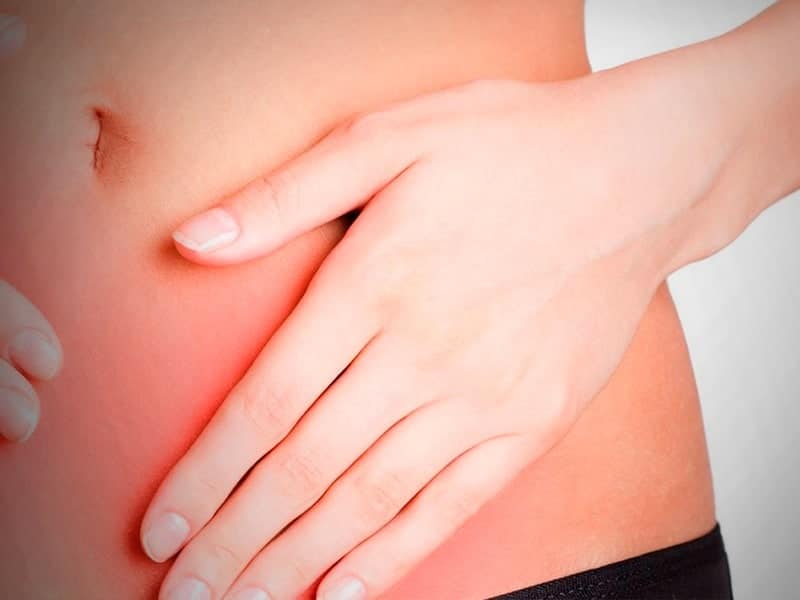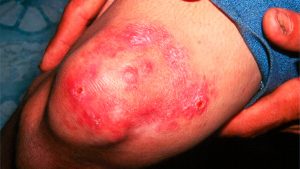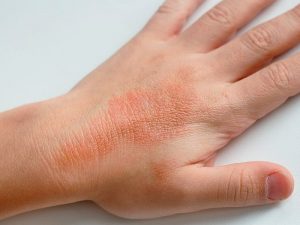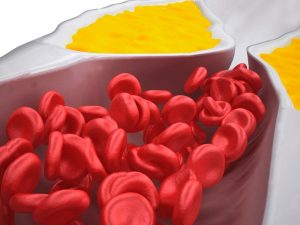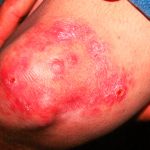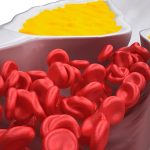What is Endometriosis?
A woman’s menstrual cycle can be a painful and disruptive part the month, but for women with endometriosis it can mean severe damage to the reproductive organs. Endometriosis is a pain-
inducing disorder that causes the uterine tissue (endometrium) to grow outside of the uterus.
In the case of endometriosis, misplaced tissue behaves as it would during a normal menstrual cycle by thickening, breaking down and bleeding. When the displaced endometrium has nowhere to exit the body it becomes trapped, causing irritation, scar tissue and adhesions to surrounding tissue. Pelvic tissue and organs can stick to one another if there are abnormal bands of fibrous tissue. Endometriosis is found most commonly in the ovaries, fallopian tubes and pelvic lining. If endometriosis affects the ovaries, cysts known as endometriomas can form. Rarely does endometriosis move past the pelvis, but it can attach to the bladder, bowel, intestines, appendix or rectum.
Quick Facts
• Endometriosis can occur any time after a girl has her first period.
• Women aged 23 to 35 are at the highest risk for this illness.
• About 176 million women globally are affected by this condition.
• One in 10 women in the United States suffers from endometriosis.
Endometriosis Signs and Symptoms
Endometriosis pain during a woman’s menstrual cycle can be debilitating, because not only is she bleeding from the cells and tissue within the uterus but also from the endometrium on the outside. The blood on the organs from the outside endometrium causes inflammation and irritation.
Endometriosis is commonly misdiagnosed by women and their doctors because of a lack of knowledge about symptoms. If you experience any of the following symptoms, talk to your doctor about getting an examination:
• Debilitating cramps.
• Lengthy periods.
• Heavy menstrual flow.
• Bowel or urinary disorders.
• Nausea and/or vomiting.
• Pain during sex.
• Chronic fatigue.
• Infertility.
Infertility is one of the most serious outcomes of this condition. Between 20 and 40 per cent of women with infertility will have endometriosis. Endometriosis causes infertility by distorting the fallopian tubes. The tubes can’t pick up an egg after ovulation once they have been damaged. Inflammation can also harm the function of the ovaries, eggs and uterus. If you are in a high-risk group for endometriosis, talk to your doctor about preventative steps.
Women most likely to develop this condition include:
• Women who have never had children.
• Those with menstrual cycles lasting more than seven days.
• Those with short menstrual cycles.
• A family history of endometriosis (mother, aunt or sister).
• Health problems that block menstrual blood.
Endometriosis Causes
There is no one proven cause for this condition, but research is being conducted to
support the following possible causes:
• Problems with menstrual flow or retrograde menstrual flow. These issues can cause shed tissue from period flow to run into other parts of the body by way of the fallopian tube.
• Genetics. Endometriosis can run in families and is possibly inherited through the genes.
• Immune system problems. Problems in the immune system could lead to the body’s failure to find and destroy endometrial tissue outside of the uterus.
• Hormones. Estrogen has been shown to promote endometriosis.
• Surgery. Abdominal surgery could lead to endometrial tissue being moved by mistake.
Endometriosis Treatment
There are several ways to diagnose endometriosis, including a pelvic examination and ultrasound. Another is through a laparoscopy and pathology report. During laparoscopy a surgeon, using a camera, will look at the abdomen through the belly button and will take a sample of the suspected affected area.
There is no cure for endometriosis, but symptoms can reduce during pregnancy due to increased progesterone in the body. Even though there is no way to get rid of endometriosis entirely, some
People will opt for surgery:
• Deep-excision: This surgery is performed during a laparoscopic excision. The surgeon will remove an entire lesion, as well as the tissue beneath. Hysterectomy: There is a perpetuated myth that hysterectomies cure endometriosis. Hysterectomies are the removal of the uterus, whereas endometriosis is most commonly found on the other reproductive organs. Removing the uterus alone without removing the other remaining lesions will not ease endometriosis pain.
Endometriosis Management
Cases of endometriosis are not all the same. Talk to your doctor about your symptoms and long-term family-planning goals to find a treatment plan that works for you. While there is no cure for endometriosis, pain and symptom-management options are available. For women who are not interested in conceiving, the most common treatment is hormonal birth control.
• Extended cycle birth control is an option that results in periods a few times a year or you can ask about continuous cycle control which means no periods. These options are available in pill or shot form.
• Intrauterine device (IUD). This protects against pregnancy for up to seven years, but may not reduce pain and bleeding symptoms for long.
If you want to get pregnant, talk to your doctor about appropriate options. Some doctors prescribe gonadotropin-releasing hormones. This treatment stops the body from producing ovulation hormones. Once you stop taking the medication your chances of getting pregnant may increase.
Endometriosis Prevention
Endometriosis cannot be cured, but you can reduce your chances of developing the condition by lowering your estrogen levels. Estrogen is what thickens the uterus lining during the menstrual cycle. To lower your estrogen levels:
• Consider hormonal birth control options that contain low doses of estrogen.
• Exercise regularly (more than four hours weekly). Exercise lowers body fat and thus decreases estrogen circulation.
• Avoid large amounts of alcohol. Alcohol raises estrogen levels, so aim for no more than one drink a day.
• Avoid large amounts of caffeine. Studies have shown that caffeine can raise estrogen levels.

